Top 500 Innovators in Cambridge 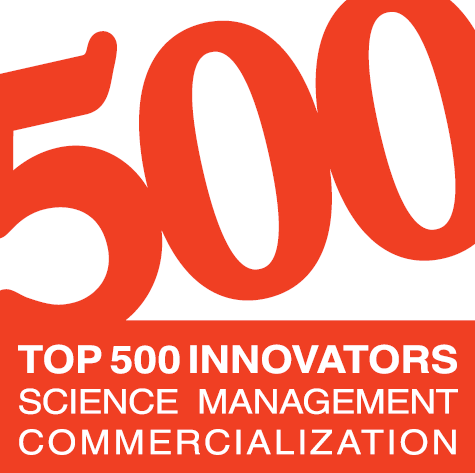

How works charisma and how can we learn it? Whether it is worth to be a feisty person? Each of us has unique skills, different personality and different skills to present a specific topic in a public forum. Certainly charisma and assertiveness we can learn from Rob Marshall, with whom we met today once again. Rob prepared for us a lot of exercises and tasks. We discussed and negotiated on examples taken from life. At today's workshop Rob has set us many challenging tasks whose implementation required to take difficult decisions. It was necessary to pave the new paths in activities, and the choices that were not obvious. In all our the decisions, it was necessary to demonstrate the interest and passion. Because it is the only way to understanding the challenges faced in front of researchers in the modern world. It should go hand in hand with modernity and tradition. Researchers must cope not only with demands standing before them in the looking for grants, writing publications. They also must find their way in the business world, because at the moment to undertake projects is necessary to enter the skin, manager, salesman or marketer. Nowadays scientist cannot think only locally, but it is necessary to adapt quickly to market trends. Global thinking is helpful in achieving that goal. Today's activities were showing that professional research facilities is not enough. Investition in modern infrastructure as part of a functioning ecosystem is also needed. We must act dynamically during changing conditions on the market, look for new solutions, rediscover ourselves in new situations.

Today's training in negotiation skills facilitated us test different ways of solve conflicts and risk assessment in business, which are walking hand in hand with science. Lecturer focused on relationships in a particular group of specialists analysis, as well as changes in them during routine tasks and under pressure actions. The main goal was the observation of developments influenced by many factors, external pressures, pressures of time, crises and conflicts between the different entities in the group. Through exercises can be diagnose many of phenomena in relationships within the group and based on this work elaborate the professional expertise, working on the researches or implementation. We got to know the structure of organizational behavior, as well as control mechanisms of behavior in specific situations, which undergo dynamic changes, especially in business practice.
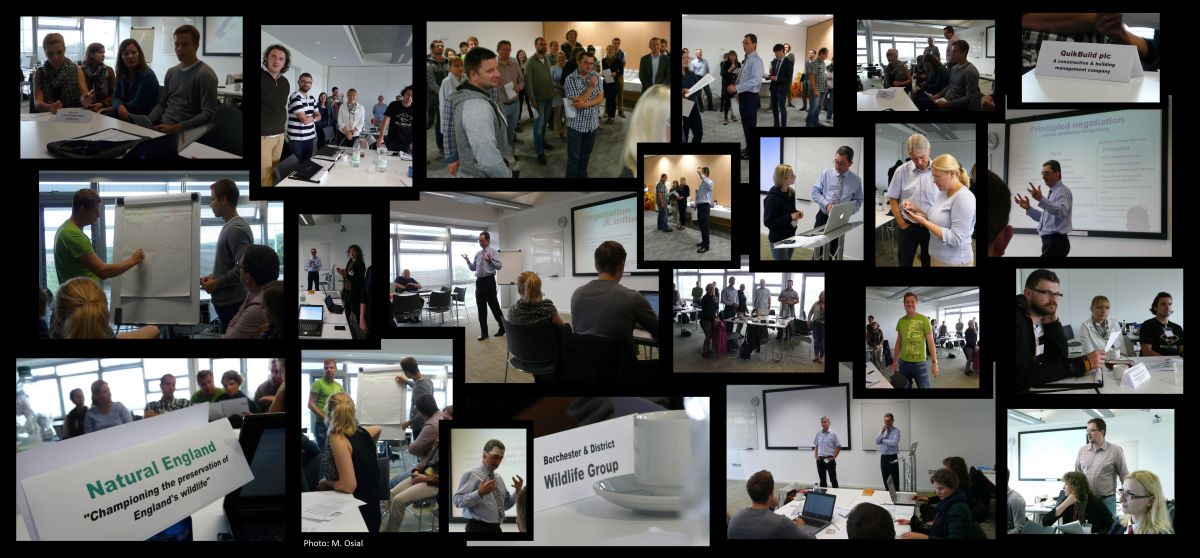
After the classes we had the dinner at Fitzwilliam College, and shortly after it we went for a meeting with Adelina Chalmers, who has many years of experience in training and workshops on different forms of presentation. This meeting was only a foretaste of what awaited us in a few days at the trainings. Today we discussed different ways of presenting to different audiences, as well as issues relating to the various standards of researchers education mainly taking into account the improvement of our soft skills. Without mentoring it is hard to explore the secrets of knowledge in many areas, so this meeting with Adelina was aimed at improving the soft skills of TOP 500 Innovators program participants in Cambridge, which complement the professional skills, determined individually by our universities. This evening meeting was a creative brainstorming session, combining the knowledge, experience, attitude towards careers in science and research development, expectations and values of each of the participants.

Numbers, accountings, counting and calculating, interests, percentage, fees, repayments, overpaids and surcharges are concepts familiar to everyone. Do we have to deal with them in a scientific work?

Sometimes the motivation for action is not enough and it quickly turns into determination, and even moreover just trying to survive, which burns creativity. How not to lose enthusiasm fighting against the omnipresent bureaucracy and how to hold your nerves when you have to deal with projects accounting?
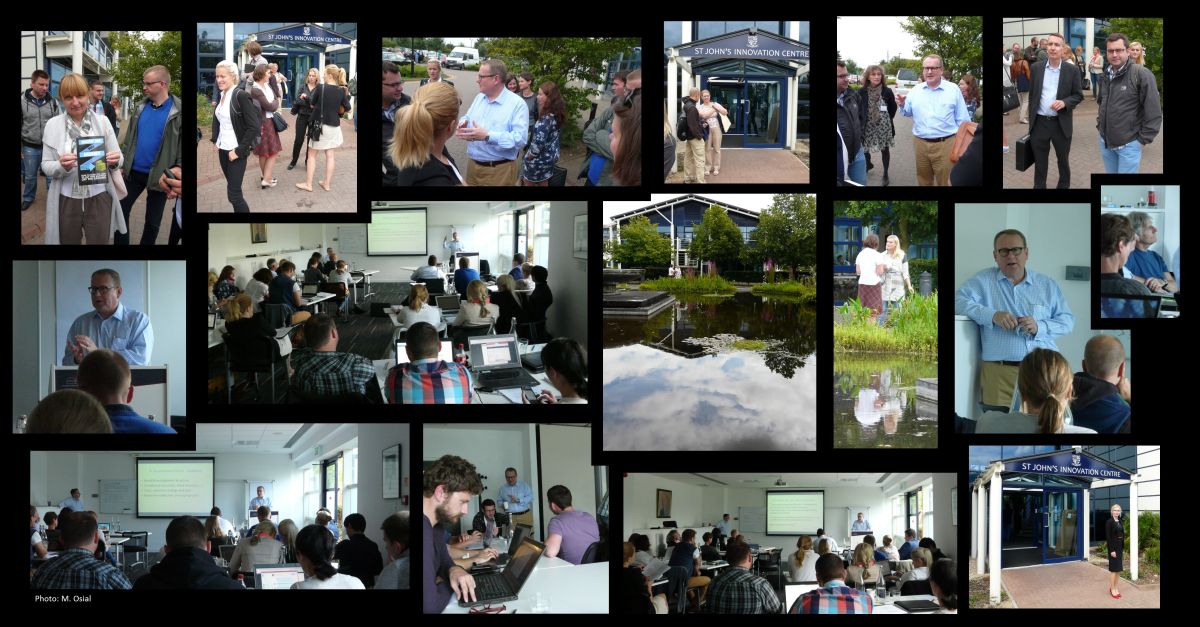
When we are assuming a start-up, should we hire an accountant or if it’s better to coordinate finances by ourselves? Assuming a new business we often need to focus most of our attention from the very beginning on searching for survival strategies, because we have to deal with difficult market environment conditions. The next stage of company development requires often making changes. However, they must be well thought out because they relate to the elaboration of financial strategies, new sources of financing and financial liquidity of our company. We need to keep exchange experiences with colleagues and expand common knowledge in the field of financial control and directions of use of capital by adapting to new market trends. We have to consider what action to take when a small business starts to become a huge one, and when to hire some help? How to avoid industrial espionage and whom to trust?
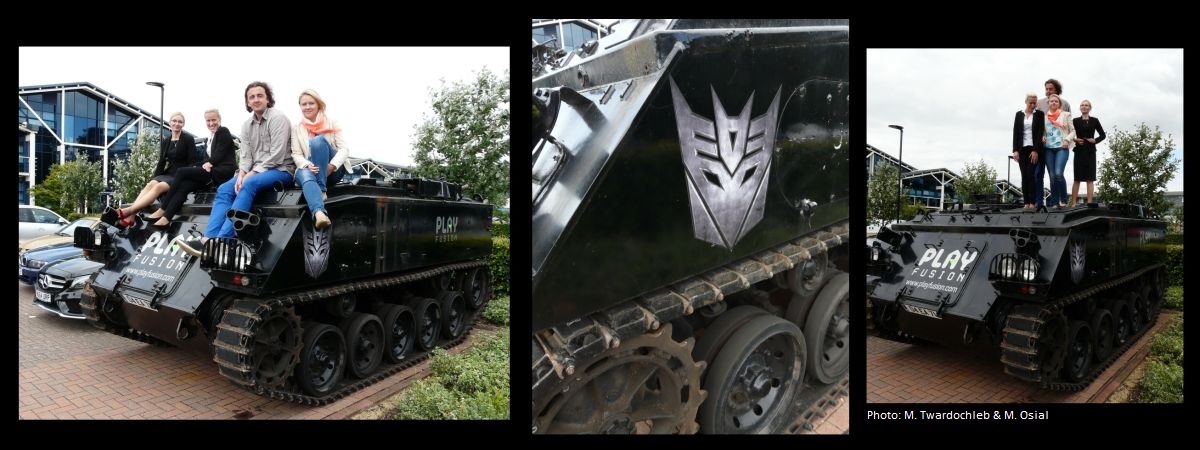
How to monitor current settlements and coordinate risky projects? How not to exceed the plan for selected tasks? How to monitor free funds in the work package at the level of the individual one and the entire budget of the project? How to engage expenses in the amount charged to the financial plan of our project? How to settle commitment to the budget unit? How to account for project finances? How to invest in the company development in order not to lose our capital? How to grow your business and build a brand? Overall, we must answer the question of how to manage finances and what decisions to avoid?
We had a lot of questions today, and our guides once again were David Gill and Alex Smeets. With today's lectures and workshops we found some solutions to maximize profits while managing them efficiently. Once again we see that every action requires planning.
Workshops are finished, however this is not the end of the day. Afternoon belongs to Gregory, who organized the meeting about Innovation & Impact Journal. Sooner or later you will hear Dear Reader a lot about this journal :) |
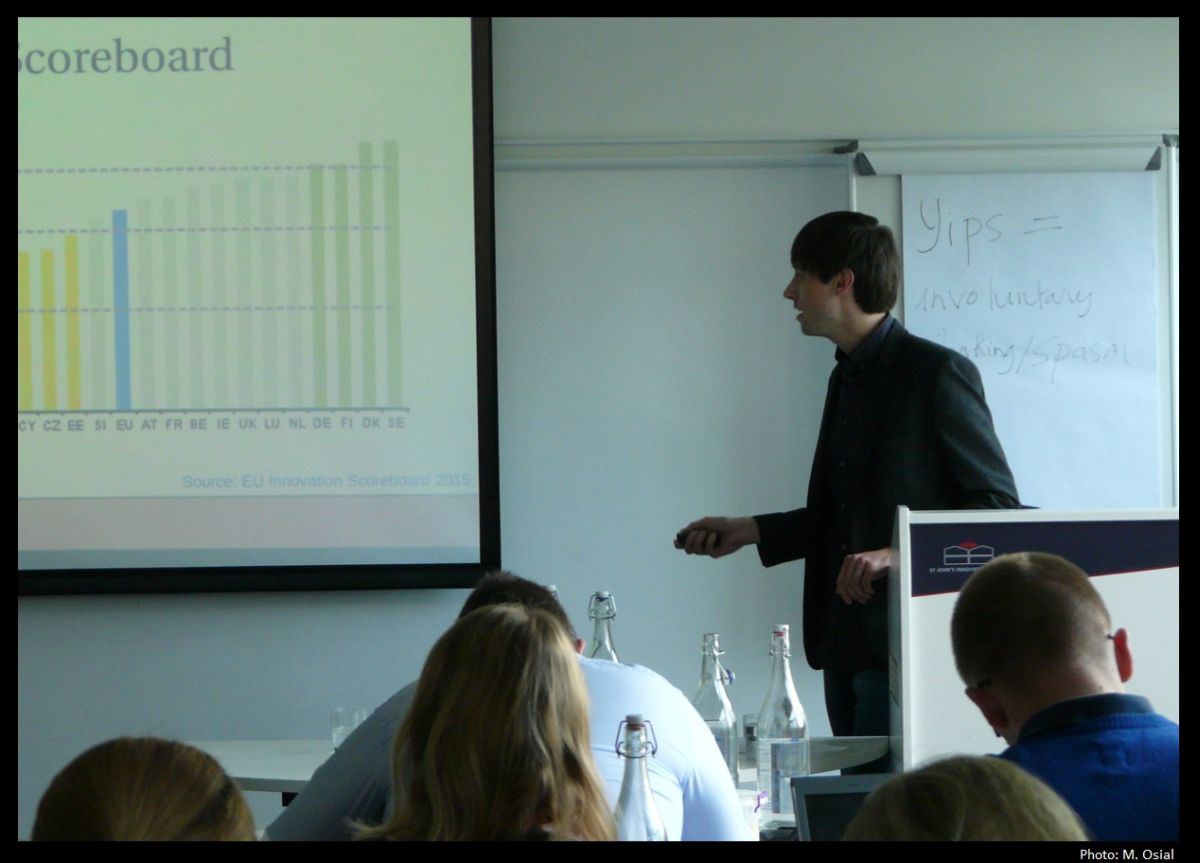 |
While being a scientist, it is not enough to skillfully manage the finances in one or two grants. There is nothing impressive in the ability to comply with the imposed cost estimate or settling invoices on time. It is also not enough to get a signature or stamp, receive several competitive bids or call for tender. If you plan to commercialize the research results it is necessary to look ahead to the future. You have to get some really good management skilks, know how to find substitute solutions depending on the circumstances in a changing world dominated by money. It is necessary to the create a legend from the very beginning of the of the idea, and to built the image of continuous development and improvement. Even if it seems that at this moment anything else can’t be improved. About this and many other ways of financial management we discussed today with Martin Rigby, Davis Gill and Alex Smeets.
The basis is the financial management of the project from the very beggining in such a way as if it was the most important investment in our lives. If we thus depends on this project, it should translate into its positive reception. In today's lectures, which was held in St. John's Innovation Centre, we dealt with finances and analyzes of numerous projects. We analyzed those that were successful and those about which the world has never heard because it had failed in the first months or years. Today, we have developed not only a variety of solutions for our projects developed at our universities and within i-Teams projects. We also worked on improving the Polish ecosystem. Good infrastructure is not enough. You should also skillfully invest money, because research equipment itself won’t measure anything, won’t produce an advertisements and won’t sell your product. Today we learned how to invest our own and other people's money, so that primarily the human will be benefited, and in a way that will propel not only the science but also the economy. If we want to be competitive innovators in Europe and globally, firstly it is necessary to invest in people, and only later in the projects. Everything also depends on the perception of the project and to treat it as a bottomless piggy bank, or as a bank, which can unfortunately be once attacked. It all took place today during the classes and we assure you Dear Reader, that we unleashed considerable storm, which is the seed of changes that will become more evident soon.

This sunny morning we have started by walking to Judge Business School comprised vis a vis the Fitzwilliam Museum. This building originally served as a hospital, but it was a huge surprise for us, when we crossed the door and we found ourselves in a very modern interior. Judge Business School is situated in the heart of Cambridge. Over 50 world-class experts gives lectures here, and the school itself offers a variety of teaching programs including the Cambridge MBA and Master of Finance of Cambridge.
The classes started with Anne Miller lecture on the development of creative thinking. Anne began her career at the Faculty of Engineering at the University of Cambridge. She is the inventor of a variety of products including Bosch power tools and Femidom production system (called the "female" condom !?). Anne, has 39 patents and is probably one of the most creative women inventors in the world. She has extensive experience in conducting trainings using psychological and organizational factors that contribute to the development creativity. In 2007 her first book titled "How to get your ideas adopted (and change the world)" was published. At the beginning we answered a lot of questions asked at the least expected moment. Did you ever ask the question in such a way that the corresponding person asked to repeat it, or avoided the question, because the question was not clear? We presuppose that everyone has had at least one such episode. Is not is an art to ask to plunge the corresponding person in complexes. The trick is to ask the questions in such way, that the interlocutor will have the opportunity to demonstrate his knowledge and the question should be also completed in a constructive comment. Today we discussed about many cases of incorrectly asked questions, as well as ignorant and unconstructive responses. We discussed also the rules in talking with a certain group of interlocutors, as well as the magic of keywords. We discussed on time and during each question the crossbar was raised. We also learned about different challenges along the road of every innovator, errors committed during the innovation development, orders and rules of selection, assessment criteria and exceptions from the rules.

After classes conducted with the assistance of tennis balls came time for creative design. The second part of the workshop was led by Andy Priestner, specialist in trainings on the development of cooperation and creativity by LEGO® SERIOUS PLAY®. The training was based on working with Lego, using them as a form of expression and means of communication. We were divided into 4 groups and each group went to their own room. Each of the groups under, the guidance of their trainer, worked on their own interpretation of the concept of entrepreneurship and innovation, as well as the use of collective intelligence to build a common ideology. The aim of the training was to broaden awareness about our own potential and of how it affects the success and development of the whole team. Lego Serious Play training is based on four basic phases: asking a question by the person conducting the course, building by the participants responses using Lego, presentation of the design model, and at the end the discussion between participants. The classes broadened our knowledge about other group members. Structures created by colleagues and their interpretation were often surprising to the other participants. Everyone had a great time.

Human creativity knows no boundaries and thanks to Lego, which were today our tools, we were creating, designing, and then presenting our ideas. And everything had to be abstract! Today, we developed a number of trademarks, product prototypes and even infrastructures and ecosystems mock-ups that we would like to create in Poland. Lecturers advised us and evaluated our projects.
Thanks to a few simple observations we could get to know the personality and the ability to cooperate of each group member. The selection of blocks and the order of selecting were also very significant. Just try to imagine, giving the group members insufficient amount of blue Lego. It will quickly turn out, who will try to control, who will try to be a peacemaker, and who finds a workaround. Thanks to simple exercises, a number of fascinating designs illustrating new products. Working with blocks allowed for identification of a group leaders, managers, strategists and researchers.
We had no idea that playing with Lego can be as engaging and creative exercise that strengthens the relationships in the group and its internal communication. We hope that through this training we learned how to develop our creative potential and how to use it in important moments for us. Creativity was today our number one. The strategy adopted by teachers enabled us to streamline many processes taking place during this internship and the effective management of a research project. We can say that today was sponsored by abstraction, creativity, development and management.
We've welcomed sunny Sunday at Macclesfield, market town located close to the Manchester and the hills of Peak District National Park. In spite of the small size of the town, the industry located over here is well known in all UK. The factory of the finished silk from Macclesfield is the biggest producer in the world. Many pharmaceutical and biological laboratories of huge companies like Astra Zeneca are also located here, in Macclesfield. According to the quite big concentration of the industry some participants of TOP 500 Innovators program in Cambridge have already visited or will visit those companies here, however the today’s goal of our trip was completely different. Today’s trip is focused on the searching of the inspiration, recipe for success and the conclusions about the differences in the polish and british system of sustainable development and support of development.
During TOP 500 Innovators internship we have great occasion to initiate meetings and to learn from the best specialists in their fields, so following this way today we have initiated next gathering. This time Tomasz Kuszczak, lately goal keeper from Manchester United, currently playing at Birmingham City, found some time to meet us.
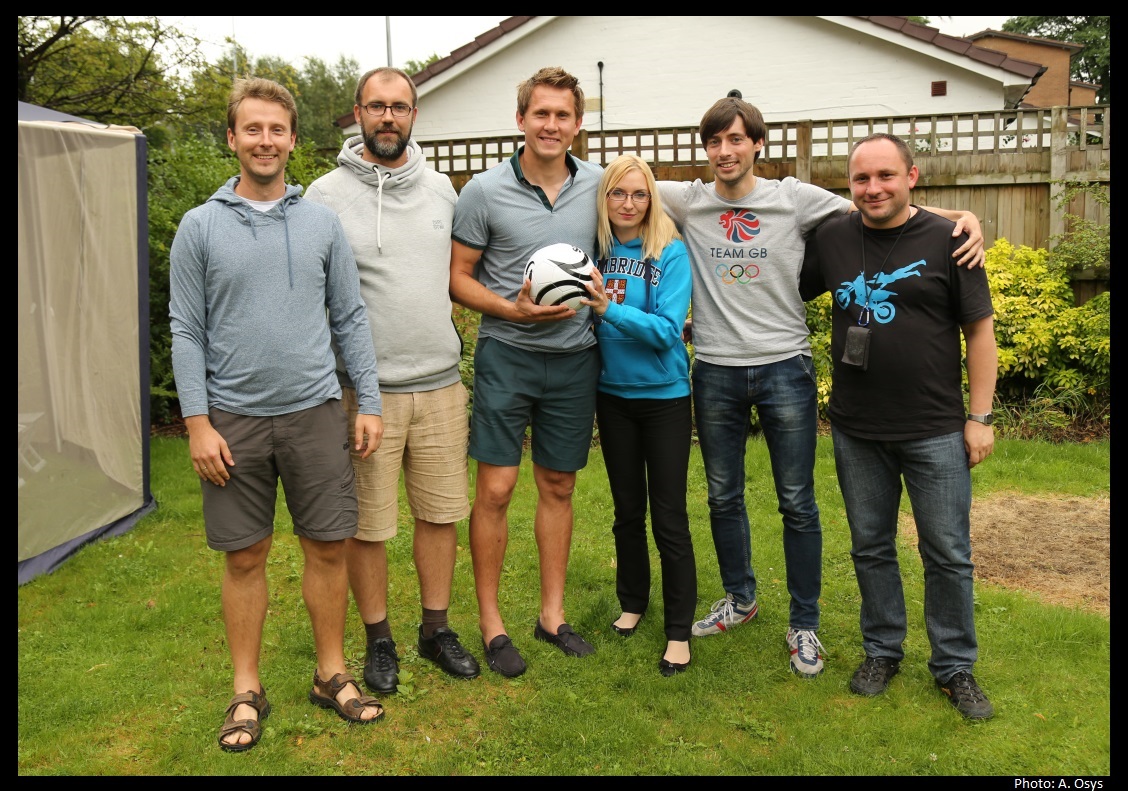
Even if the correlation of sport with the product development is not obvious, there are a lot of similarities. Player has to be persistent as well as researcher during the technology development and its introduction into the market. Tomek charismatically and enthusiastically referred his rise through the ranks to become a sportman, motivations to work, landmarks and watersheds. Meeting with Tomek was a remarkable occasion to meet another glutton for hard work not only on the silver screen but in reality. We had also a chance to discuss about the current trends in development of the science and advertise the TOP 500 Innovators program beyong academia. It was great opportunity to acquire a huge dose of inspiration, valuable advice and the lesson of the survival in academic and nonacademic environment.
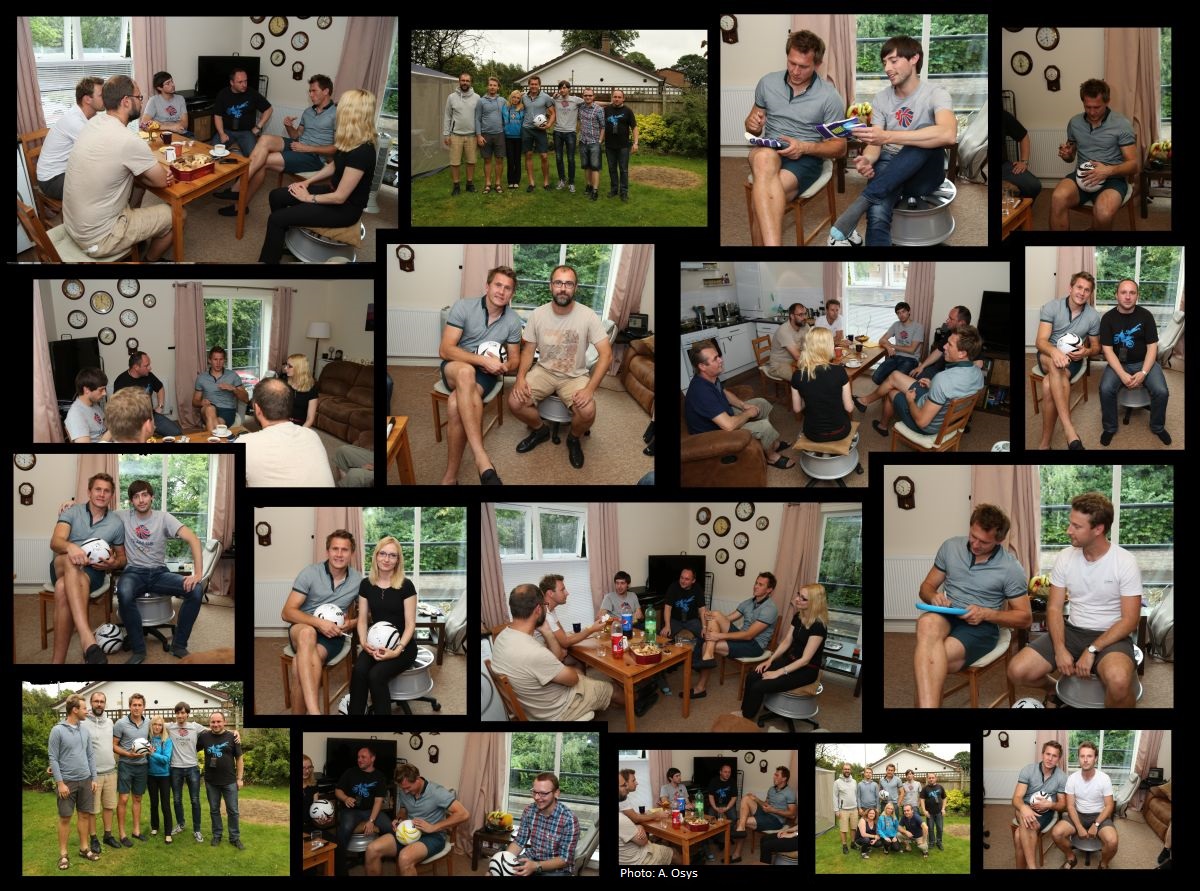
Time flies fast, so after inspiring meeting we returned to Cambridge avidly and we plan meetings for the next days.
As we have mentioned before the University of Cambridge consists of 31 different colleges and the academic research in every field from many centuries is famous for pathbreaking discoveries. From the evolution, through atom, to DNA research…and it is almost impossible to count all grand theories which have changed the world and were created and developed right here. Scientists from University of Cambridge created theories which are well known around the world and achieved 92 Nobel Prize awards. All colleges in Cambridge have their specific and unique “climate” and grand theories like evolution theory have been created exactly in those colleges.
Today’s expedition was focused on the history of the biological and biomedical research, so we have started our trip in the Christ’s College, where many years ago Darwin was studied. The next stop was college named after Darwin, the Darwin College, where studied some Nobel Prize laureates: Max Perutz, chemist awarded on the research of hemoglobine and mioglobine structure, César Milstein, biochemist awarded on the antibodies, Elizabeth Blackburn, biologist awarded for the research of telomeraze enzyme and other great minds. It’s wort to mention that in Darwin College the “revolution” took place, when at first both men and women were admitted. Christ’s and Darwin Colleges were not only two stations of our expedition, however the best overview of our trip can be found below, at the collage.
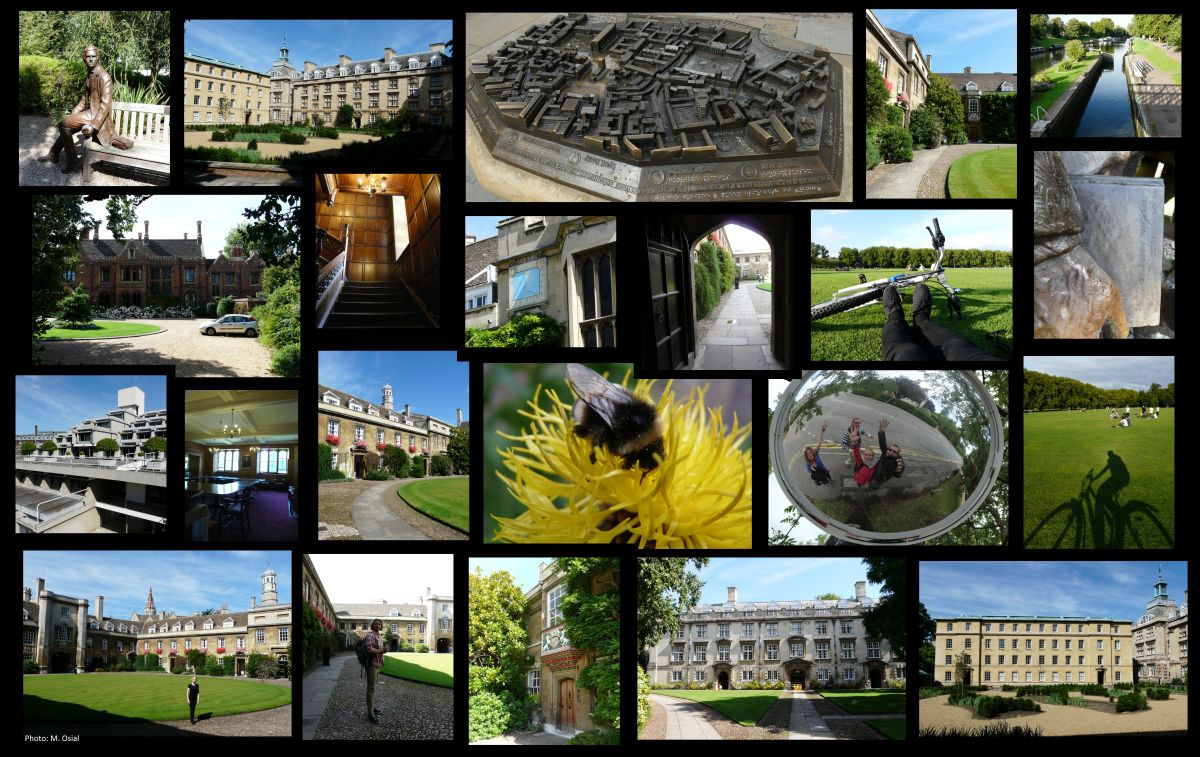
According to the general opinion people think that classically negotiations take place only between seller and buyer. This misguided opinion deviates from the reality. We have to negotiate in work and home, with boss, colleagues, family, kids, neighbours, even with best friends. Negotiations can be carried publically or behind the closed door, however regardless of the place and situation good negotiations means mutual agreement of both. In spite of the fact that we have participated in many negotiations workshops, sometimes unexpected life or business issues may surprise us. Then negotiations look more difficult than examples in the literature. If we want to achieve precious result, not any result, we the rational negotiations is needed.
Today we had a lot of fruitful brainstorms and visits in the companies and laboratories in which some research will be continued after our return to Poland. Although negotiations are not easy, we treat them all as the challenge, valuable lessons and every time we enjoy each case. To sum up last few hours, Saturday’s morning has been sponsored by letter N - like negotiations.
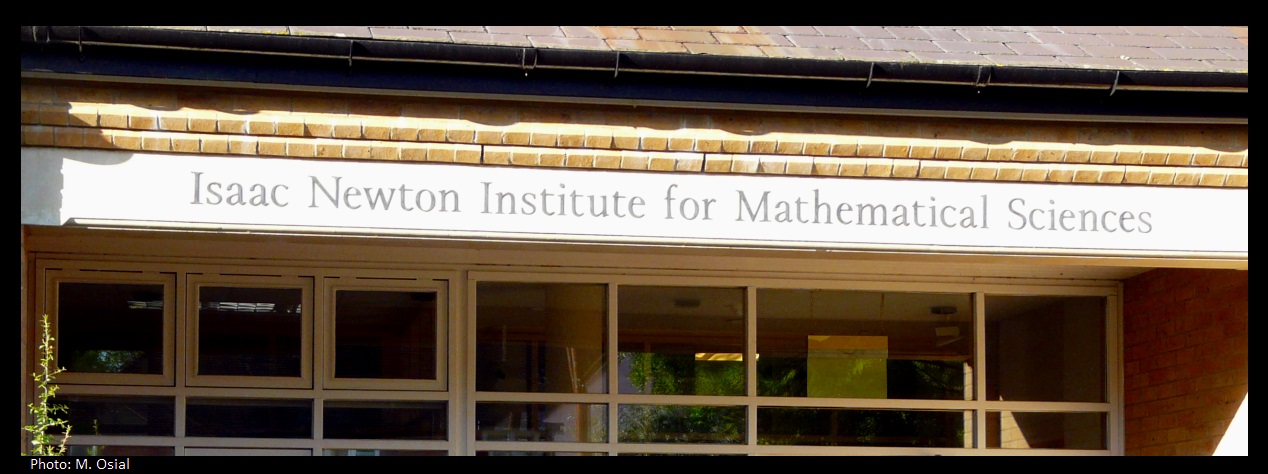
We are all watching news, movies, cartoons, TV shows etc. It is easy to watch recorded presentation, however watching of our own “performance” is not so easy, especially if we are still improving our presentations skills. Today we had a recap of our i-Teams projects, evaluation of the progress and estimation of the project evolution. Time after time we have more and more tasks and definitely, every week the project development is more intensive. We dare to say that also project evaluation is stricter. Today, once again, in front of camera we have presented our projects, evaluated projects of other participants and we had to face the strong and weak points of our work during last weeks in Oxford. There are many long discussions, information exchange, meetings and consultations behind us.
More... We may assume that the model of project development in different fields and application of such model during its introduction into the market is proper, but… how to be sure that our assumptions are correct? How to be sure that we’re prepared for many interactions with “external world”? How to communicate effectively and send proper “take home message”? How to convince client that he may trust us? How to estimate if this is right time for our project? How to reject even good project and do not lose motivation? How to prioritize tasks during management and stimulate team to cooperate? How to deal with sudden and unexpected market changes? How to ad-lib in the risky situations during commercialization and do not give up? Today, the meeting of i-Teams was very creative. The dose of knowledge was much bigger than we’ve expected and conversations had finished much later than we’ve planned. It’s good, isn’t it? In this way we have great opportunity to confront the reality and also spread the wings in the interdisciplinary research team. We cannot wait for the next charismatic trainers and intensive workshops like today.
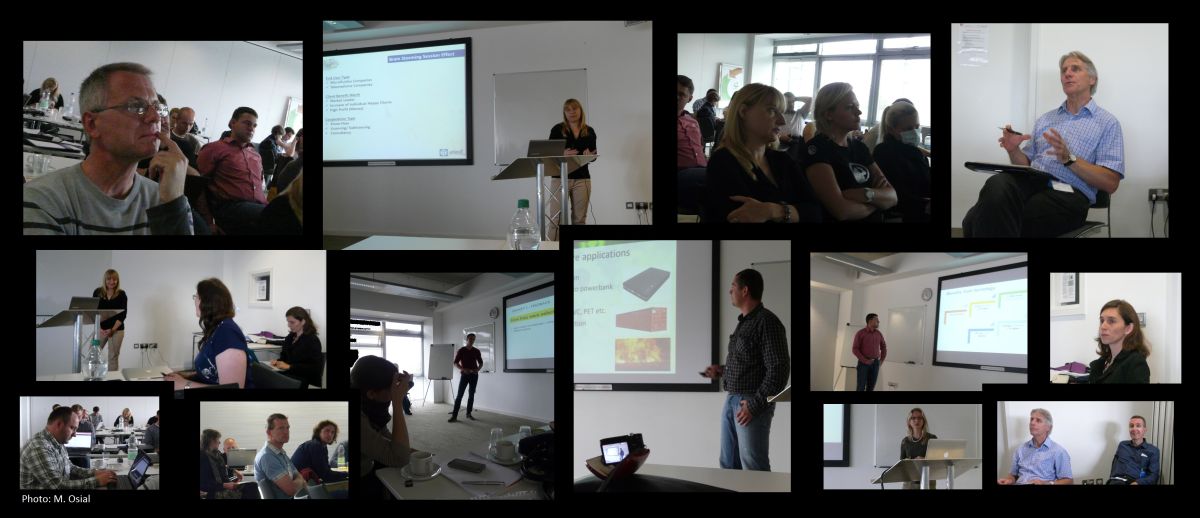
From ISIS Innovation headquarters we went straight to the UK Space Agency. Classes were held at Harwell Centre pertains to the European Space Agency. From the outside, inconspicuous looking building discovered the secrets, which we got to know over many hours. We met projects and tools for researchers working on projects, which could previously only dream of. Today's classes were devoted to innovative projects, which are used in satellites. One of the crucial success conditions in advanced projects is experienced research staff and effective team management. Here it is not only a good idea and the market, but most important are the human resources and research methodology, which can ensure effective implementation of the projects. What really matters is the knowledge gained and that one that will be collected as soon as possible. Important are the techniques and tools in project management, tailored to the financial and organizational conditions, the optimum use of human resources and available measurement tools. Today we discussed the methods and procedures, which make possible functioning at the same time according to good communication and minimum risk.
We had an opportunity to participate in the screening of the baltic regions, where some pirate bays are fishing illegally. We analyzed dozens of satellite images and observed the progress of the development projects, which are vert important in the international arena. Here counts passion, timeliness and coherence of activities and should be aware that there is no space for mistakes.

Today’s morning we’ve started at ISIS Innovation headquarters, where we’ve learned how to avoid traps during commercialization process. Huw Edwards supported us during exploration of such traps, complicated procedures, principles, prohibitions, and hidden rules at the different stages of product development. We’ve analyzed various pathways of inventions development, especially at the most risky stages and at different market readiness level. Huw has shown us how to differentiate evaluation for similar projects and how to avoid miskates during systematic investigation of the significance of project. It was told how to define criteria and describe the value of the idea leading to the preparation of prototype, how to plan the sustainability of the project and how to compare that project to plan for its future.
In this workshop we were monitoring, identifying, developing and managing, but this is not the end. That's exciting time for the project development as it moves from the planning stage to the introduction into the market. At this training the extensive work has been carried to bring forward the next phase of project. After today’s workshop we are ready to answer many difficult questions, especially about the commercial viability. It is much easier to choose the strategy about project development and after its implementation to opt the revolution of evolution as the strategic move. We are ready to decide which option is better...should we go with the flow and implement changes according to the actual trends in the market or should we start revolution by innovative product, no matter if the market is not ready at the moment. Regardless of our choice, we are ready to face the music.
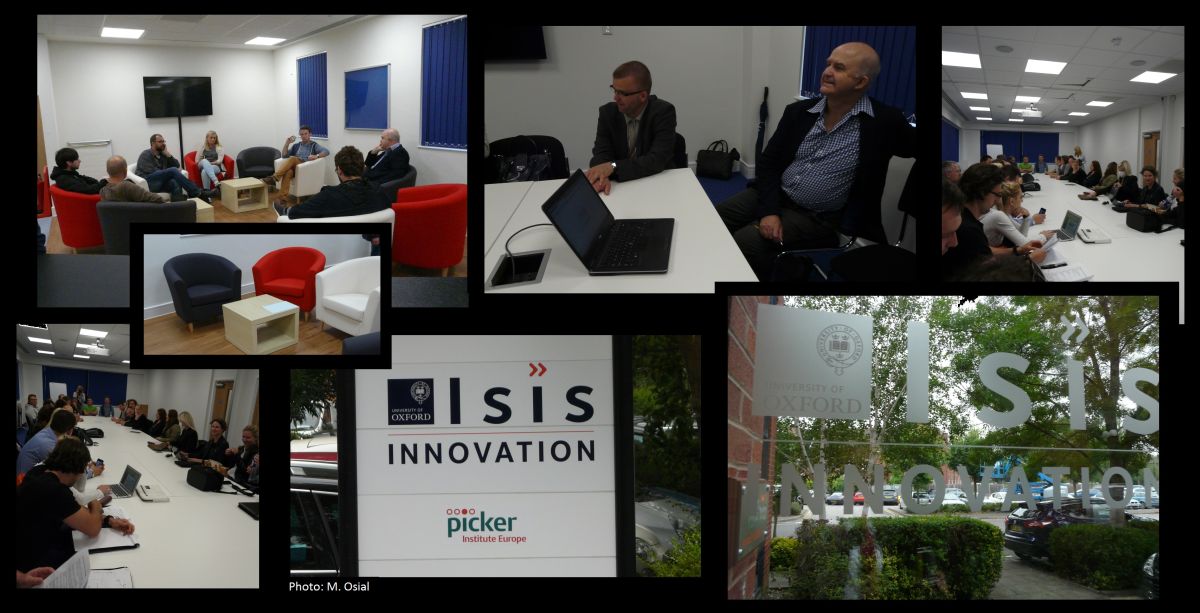
The workshop was ended just before dinner, but it's not the end of attractions on today. With a great pleasure we have met to discuss the Innovation Impact journal case which is one of the projects undertaken by activists from TOP 500 Innovators program at Cambridge.
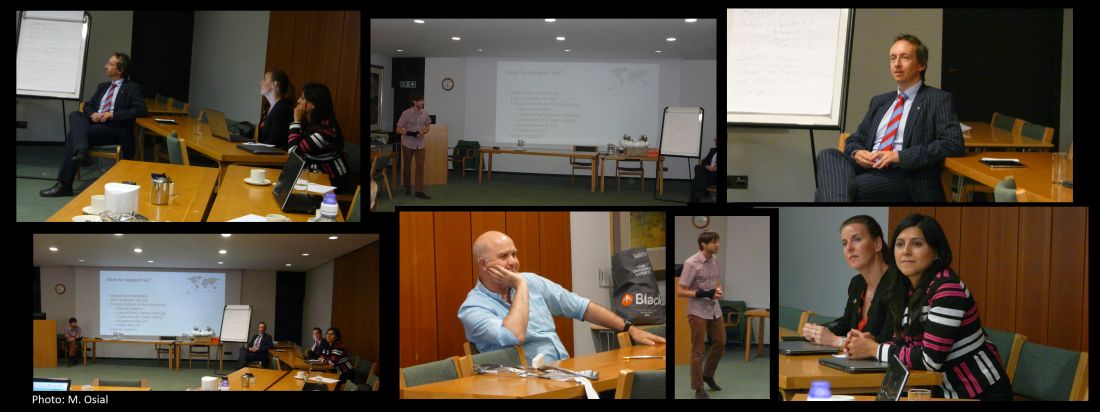
Gregory keeps an eye on that the end of this year the first issue of the journal Impact Innovation be published. This is the last day at Oxford University. Tomorrow await us a trip to Space Agency and return to Cambridge.
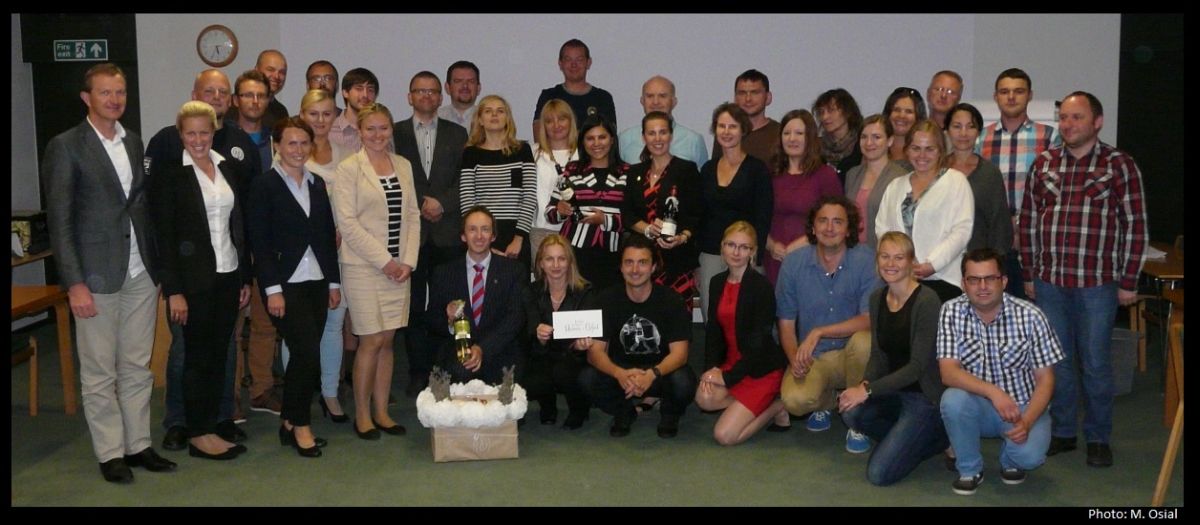
Let us consider what is more risky…Driving on ice or on a horse? Flying or scuba diving? Being under the open sky during a storm or at the risk of an avalanche during a snowstorm? How to predict a disaster if dangers are waiting for your company around every corner? We’ve prepared a lot of plans today ... the disaster ones. It is much better and easier to learn from others' mistakes. Today, we analyzed many "catastrophe" plans that prosperous companies can met. Nobody could predict this, but incompetent management, too aggressive competition or too dynamic change in the market has led to the failure of giants or young visionaries. Should we avoid the risk? Definitely not! PESTL analysis will be helpful, because one thing is certain: if something does go wrong, all the failures will probably cumulate at one time, and we must be prepared for all eventualities...after all, do You remember the Murphy's laws?
During the first part of the day Huw Edward from Cambridge Enterprise was explaining the aspects that inventor might be asked by potential investor. This includes due diligence and risk management. It was also important to focus on a right people, since ‘’Projects are delivered by the people and the outcome is determined by the team’’. Following the practical exercise focusing on logo design of bio-beetroot spread, delegates were taught about the risk management and proper risk planning. During the second part of workshop, Huw was explaining the PESTL analysis of risk planning technique. This acronym stands for identification of Political, Econimic, Social, Technical and Legal risks.
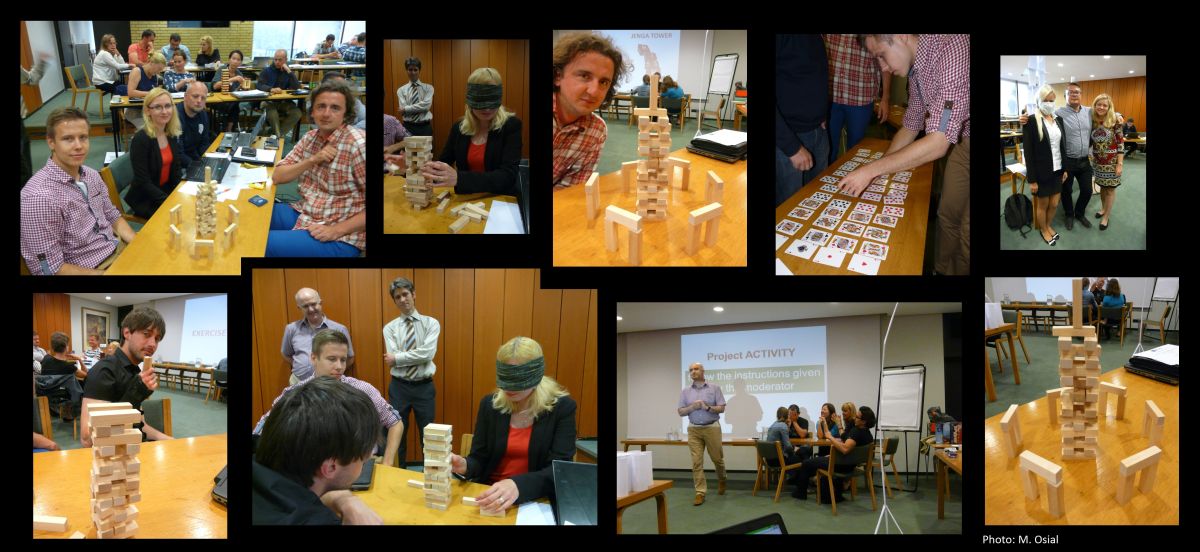
Another day of classes with Huw Edwards was based on only few lectures and more different kinds of exercises aimed at improving our ability to communicate and collaborate in a group during risk exposures. More remarkable was the form of these exercises... For example, have you ever tried to build the highest tower, having only paper and tape? Probably not, and if not Huw, any of us wouldn’t done it either. More specifically, on the needs of this exercise, we were divided into several smaller groups, we received few A4 papers, tape and the command: Please build the highest tower as possible. We did not have sufficient amount of scissors, but also the time for this task was very limited. Despite its simplicity, the exercise forced us to use our brainstorm skills. We also had to present our idea very clearly, so that it will be understandable for other members of the group. Very interesting were also the different approaches of various groups to the topic of this exercise. But to build the towers is not everything. We also tried to play the role of William the Conqueror and Harold II advisers. And all for one purpose: to learn planning, management and communication, not only in moments of ascent, but especially during the danger!

Today's classes were not only informative and inspiring. They were a good lesson in communication, strategic planning and diplomacy. For a long time we will be getting back in our memories to the moments that we spent on these workshops.

How to ensure high-quality of our researches? How to make sure, that our research results will be credible from planning till reports? Are equipment manuals or multi-boring data sheet descriptions of written to make our life more difficult? Today's classes were devoted to the prohibitions and commandments, norms and rules, descriptions, instructions, tips, recommendations, directives and regulations, and all to meet standard system that will ensure the desired quality of our work and laboratory tests. Good Laboratory Practices (GLP) are not only rules for chemists. Practice makes perfect and today's workshop allowed us to test our competences in many areas. Already after the first few minutes of the workshop we found that GLP is something for everyone and these rules have proved to be extremely interesting issue.
Today classes led Huw Edwards, who is an advisor in the development of innovation. He has a great experience in knowledge transfer to business and industry, and in carrying out various projects in UK and other countries. He is also an expert of the European Commission in the field of Micro- and Nanotechnology. In his lecture he told us about many important aspects, such as good laboratory practice and good manufacturing practice. His workshop was an exciting challenge that causes a lot of discussions and interactions. Unfortunately, we were so engaged in activities that we were ready for more. The classes have finished much later than we expected. Because the more obstacles we encountered the more we gathered ranks to overcome them. Thanks to Huw ingenuity our discussion on GLP had no end today. We look forward for more.

As we previously mentioned sometimes our weekends here tend to be longer. This is another day off from classes, but it does not mean complete absence of duties. The afternoon belongs to i-Teams, as well as for training sessions and coordination of other initiatives, however morning and afternoon belongs to the Stonehenge, which we have visited once again. The stone elements from the famous circle weigh 50 tons each. They have traveled hundreds of kilometers from the area of the Preseli Hills, form the Carn Menyn mountain, before they stood in the place where they are today. Based on archaeological excavations and studies of the enamel of the teeth taken from skeletons from the surrounding tombs, scientists confirmed that the Stonehenge builders came precisely from the region from which the stone blocks have been transported. Stonehenge is worth visiting at different times of the year, and today, thanks to weather turbulence we had the opportunity to find out how the oldest monument in the British Isles looks both in the summer sun, and in the autumn rain.
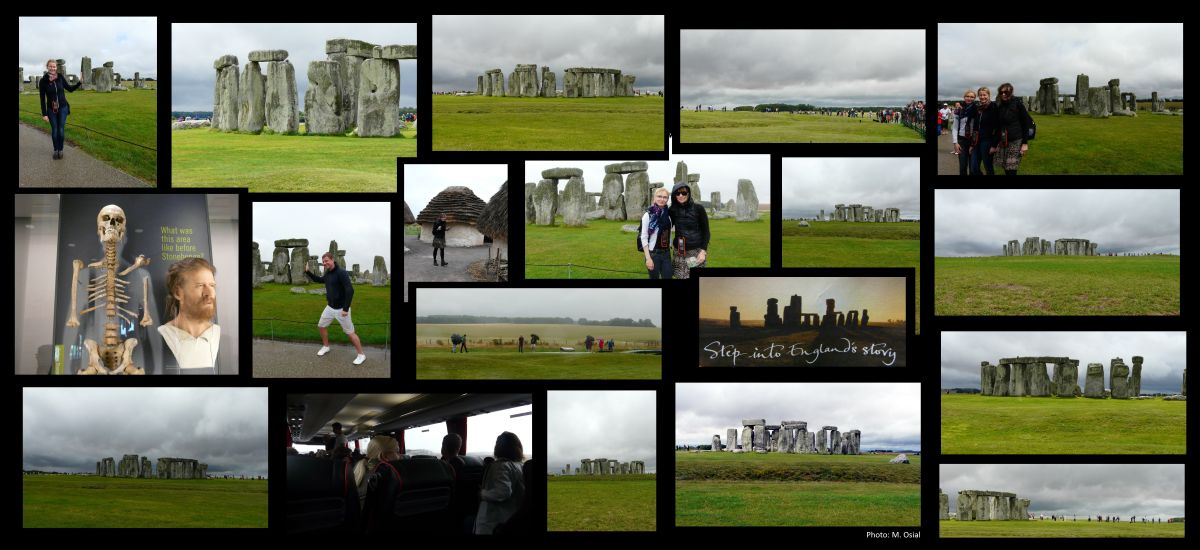
After a trip to Stonehenge we went to Salisbury famous for its huge cathedral. Today, we read in the local newspaper that few days ago two paratroopers jumped from this building, and were even more curious about this place. This Gothic structure was created for a hundred years, starting from 1220. Despite the fact that it stands on shaky ground, thanks to the solid substructures, it will remain open to visitors for the next centuries.
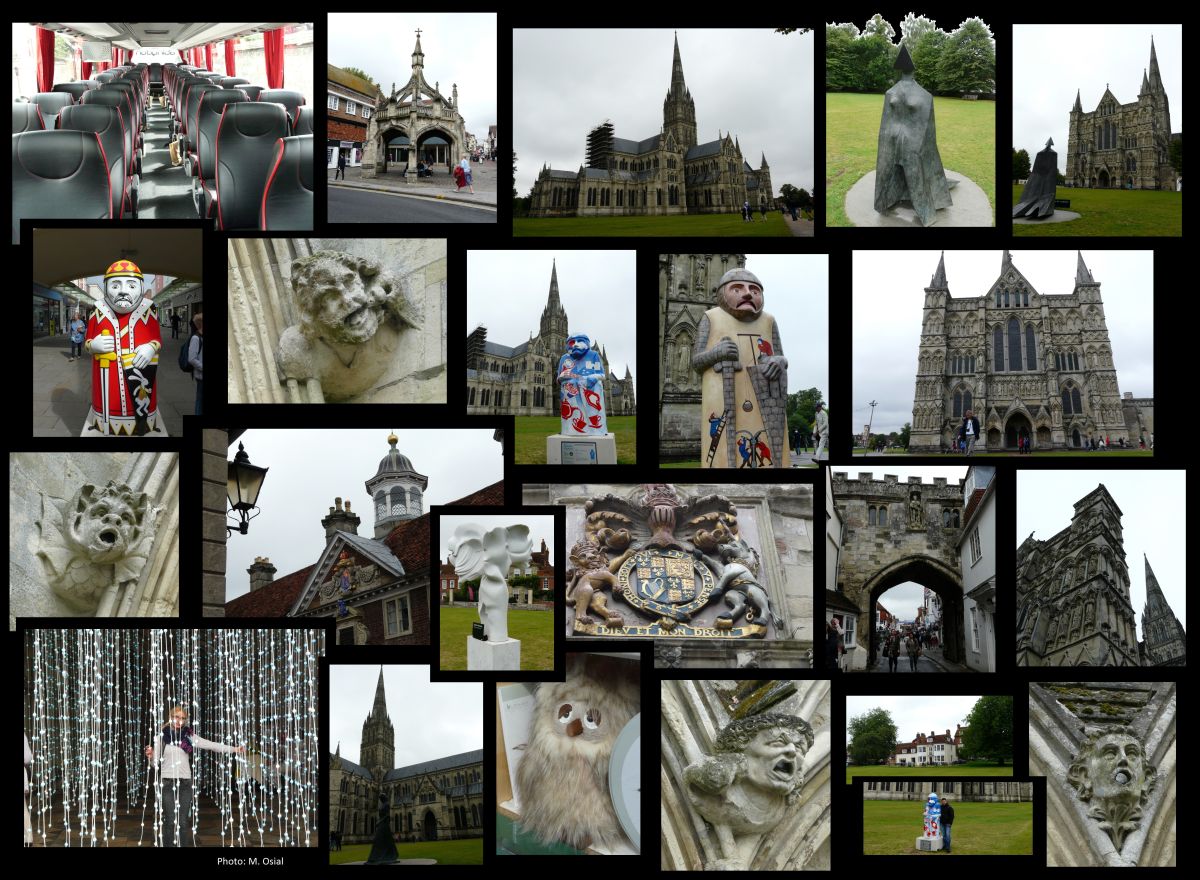
It is worth mentioning that yesterday we were joined by second group of innovators coming from Cambridge. You would probably define us as mad scientists. Because looking around we noticed many possibilities of common actions. We will tell you about initiatives taken by us and discovered scientific mysteries really soon.
In the evening, we had i-Teams meetings. Many of us had also discussions on the projects that we have made already during your stay in Cambridge, and about planned activities for the coming week and the time after returning from her training. Among the many brainstorming sessions, this evening belong to the "magazine” meeting, which, as usual, professionally led Gregory.
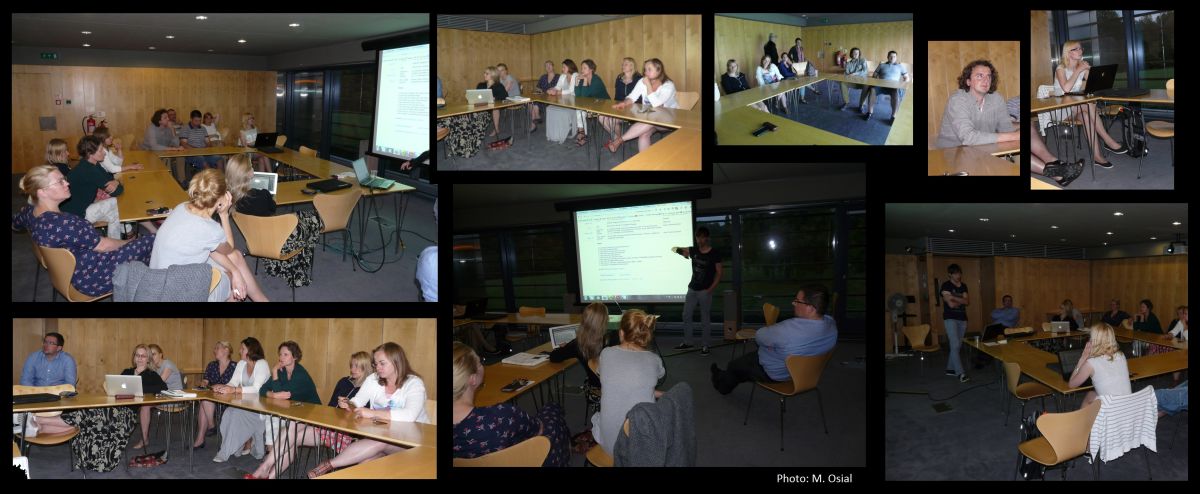
As it was given us to find out, all coast are not the same. We could not refuse us next visit on the white English cliffs. The highest in the UK. This place history begins on the seabed in the Cretaceous and remain to this days. With these Cenozoic uplift we can admire the unique white cliffs, where you can feel like at the world’s end.
Place name comes from the French and as it turns out, that has nothing to do with the beach. The French called this place a beautiful cape, but from almost over 300 years finally stood on the name Beachy Head was given. Despite the many battles, fights and wars played at the foot of the cliffs, this place seems to be untouched by the passing of time. Here took place the battle about Portland, 37 years after the Battle of Béchy Head, during the First World War, another battle of Beachy Head, which sank 30 merchant ships in World War II Royal Air Force (RAF) have set on the cliffs radar stations and radio transmitters about the strength of reception from the Eiffel Tower. However, Beachy Head is not just a battle and they saw a lot more. They were a place of numerous movie scenes, among others, with James Bond parachute jumping, the lighthouse has been immortalized in the Harry Potter conducted here were recorded videos, radio programs, as well as literary meetings and many others.
Before the lighthouse was founded, these place by many sailors, especially the Middle Ages, was treated as the azimuth at sea journeys. Today cliffs adorn the coast and even beyond them there is not much here ... we spent here all day and is a shame that we could not have been longer.
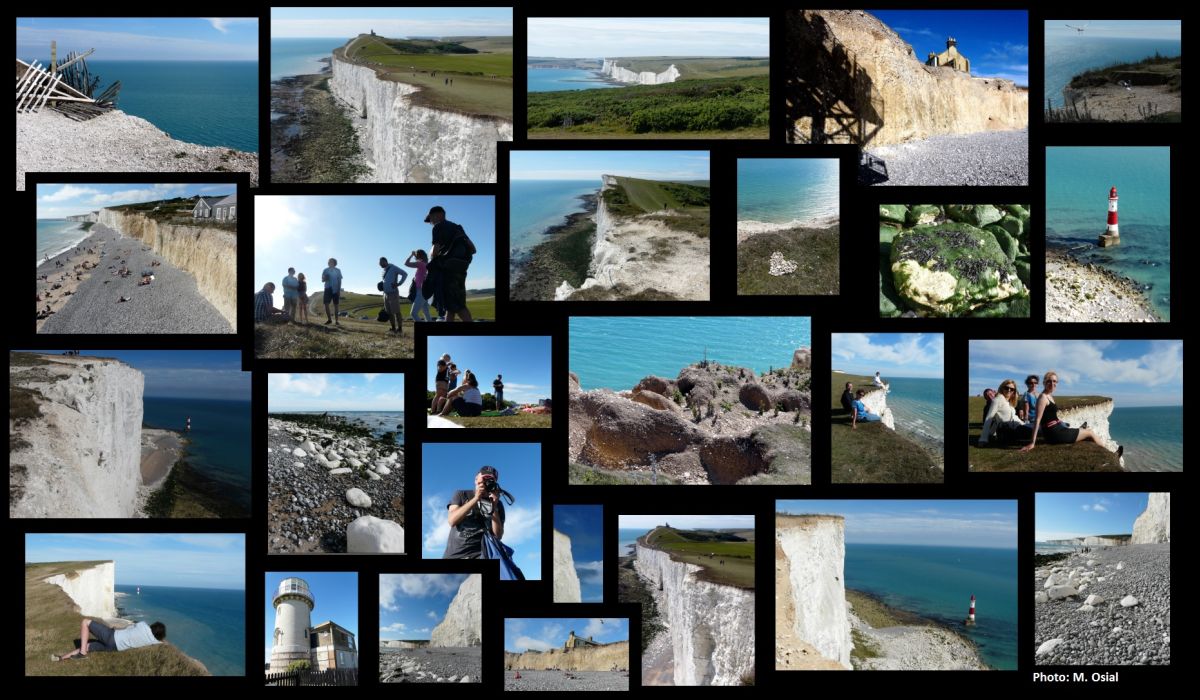
Returning from the cliffs we hiked to standing on the black rock of the Paleolithic seaside Brighton, lying just an hour from Béchy Head, and which was once the summer capital of England. City history began in the fifth century A.D., when it appears the first mention of the Saxon village of Beorthelm, also called the village or farm Beorthelm (Beorthelmes TUN). Initially, the residents keep up fishing and crops. When the first church in the early twelfth century came into being the Brighton has grown and was famous from meat stalls, corn and market.
In year 1514 was French invasion, which turn the city into rubble. Invaders burned everything what they encountered on their way, but only 64 years later in Brighton reborn from the ashes like phoenix. Unfortunately, the battle and the war in these areas in the seventeenth and eighteenth century did not spare the town. The more city grew, the more often haunted it woes, and although at the time First and Second World War, the city was not completely destroyed, the residents could breathe a sigh of relief until about 1950 when new industrial buildings are develop what provide new work opportunities and 12 years later also the University.
Today, the Brighton is a tourist destination what we felt very quickly. Tourists are attracted by not only the proximity of London, but also many gardens, parks, museums and towering buildings, among others, royal pavilion of the eighteenth century, which are built in Indian style and are the city pride.
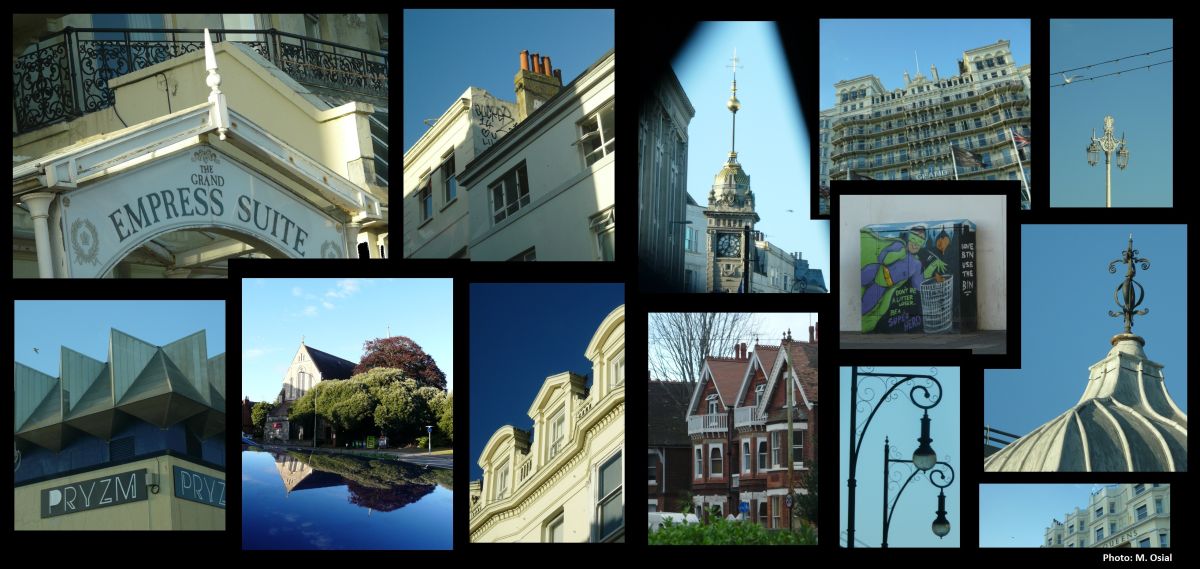
TOP 500 Innovators internship is not just a strength test and adventure. During your stay, we have the possibility of utilizing free time in many ways. As a innovators we are hungry for knowledge and curious about the world. We look forward to the next trip into the unknown. Choice for today to some of us was London, some participants will be in St. Cathrine College to conduct meetings, and others one will go to the other end of the island to discover the secrets of the UK.
Today's post, we devote to a trip around the island, which was attended half of the group. The expedition began at dawn, setting off the so-called Bath, which was built by the Romans. Their idea was to create a builders bath - Aquae Sulis at the site of geothermal waters and the temple, which eventually became not only a place of religious, but also cultural. Over the centuries, bath destiny changed and although originally considered this place a health resort, with the time it took nature Spa and now the curative waters here nobody will hear. For centuries, pilgrims visiting Bath, but after giving it a town charter in 1590, the city became a place of recreation many rulers and today instead of the pilgrims survive the invasion of thousands of students and tourists. Royal gardens of Victoria, Prior Park Landscape Garden, many museums, churches on every corner, Pulteney Bridge and building was being ubiquitous architectural jewel of the British make that we wants to visit again these place.
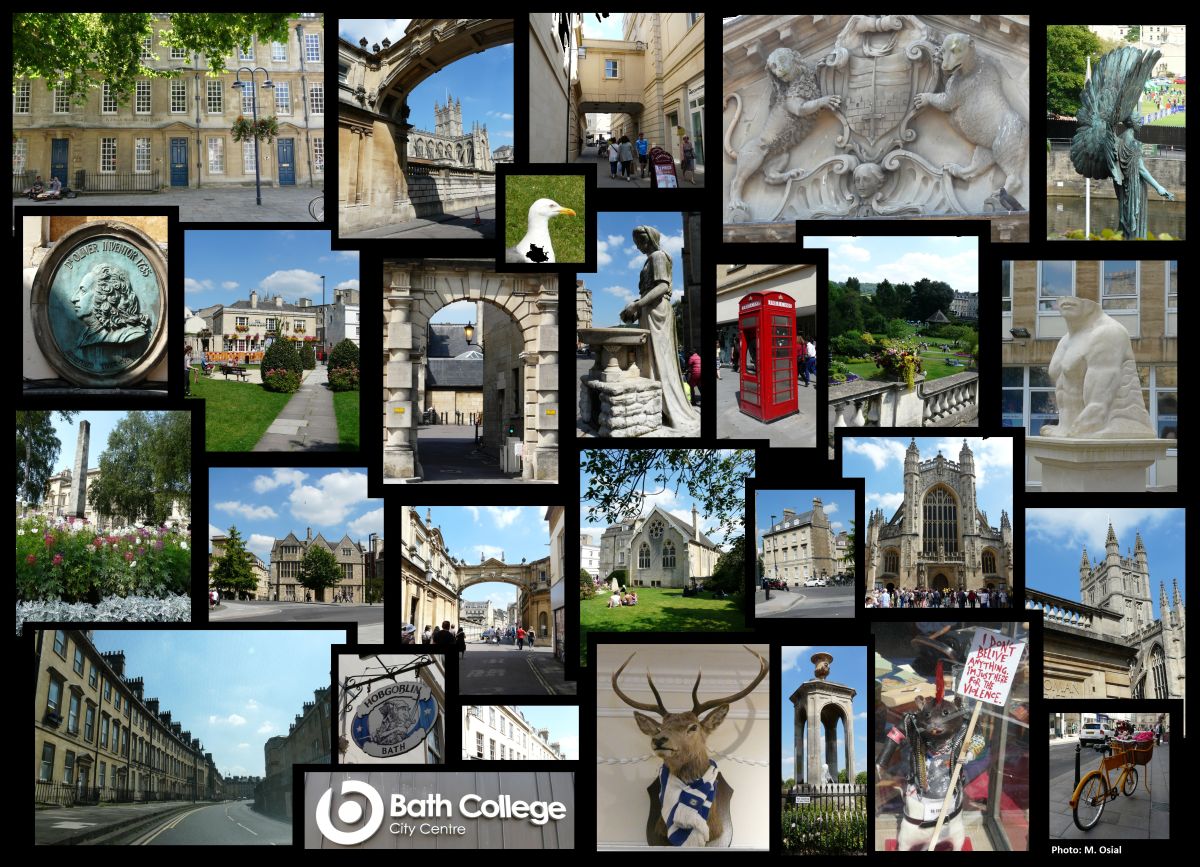
From Bath we went to Bristol, but it was impossible to get past the phenomenal Clavedon marina. These place is found on the list of national cultural heritage objects. On the other hand, the map with a list of all objects discovered on the island during our other visit, i.e. to Stonehenge and during each trip into the UK it is extremely useful in uncovering further pearls.
Clavedon Pier was built in Victorian style and remember the steamers, and in less than five and a half decades will celebrate its two hundredth birthday. Strolling along the pier we get the impression that the time has stopped here for longer. Boards cover thousands brass plates, with each section of the pier coastline looks completely different, and at the end of the bridge. There is a cafe, where you can eat cakes baked by the residents. Offered coffees and traditional teas are amazing. With our cafe visit, we can learn more about the history of this phenomenal place. Dear Reader, we ensure that Clavedon is worth a visit.
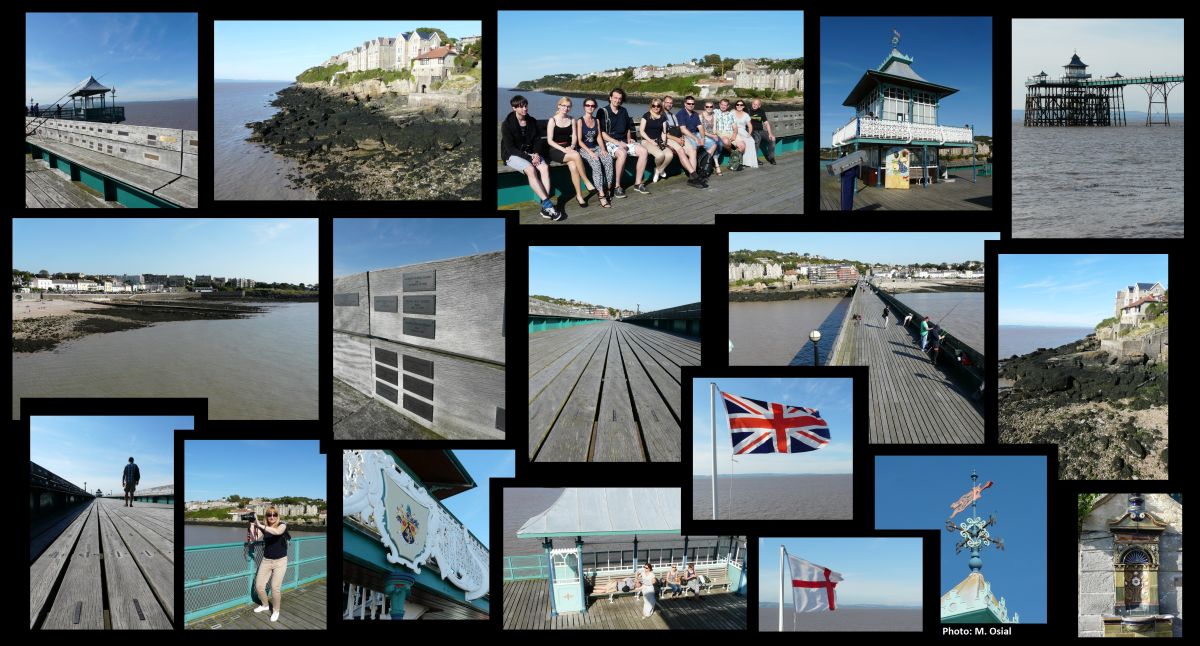
The sky color has become warmer and we went to Bristol, in which hosed the International Balloon Rally. Unfortunately, it was impossible to visit the city heart, but we could not wait to fly over the dragon city.
Once again, according to today's expedition we find out that the day should have at least 30 hours.
After the presentations and expert opinions we felt a little a relief, though it was not easy. It was especially difficult to listen to recordings of previous presentations and compare them with today’s ones. Questions have often been complicated and tricky! We were able to answer both questions in the substantive topics, questions for the further development of the project, as well as questions of economics and business. Now it's time for further development of events...
In Oxford we will stay for around 144 hours. Nothing stands in the way to hand us the training certificates from local University today. This solution although it is odd it has also a hidden purpose. It is not yet time to go, therefore, instead of "hugs & cries," we can safely concentrate on "hugs". In this way, we don’t feel the relentlessly speeding time and for a few days we can enjoy the moments that we spent together here in Oxford.
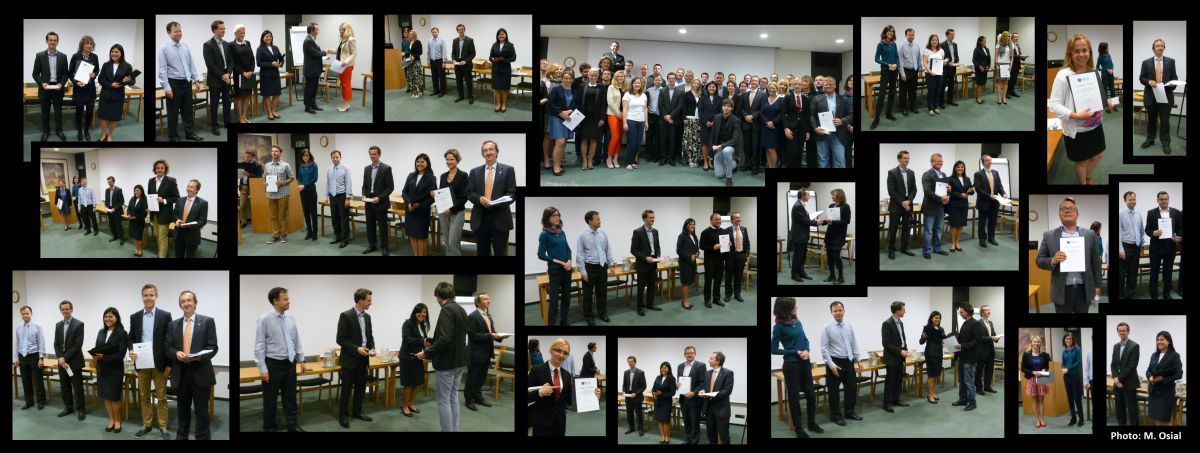
In the last few days we had some workshops to improve the presentation and negotiation skills, long meetings, lectures, numerous discussions and consultations, and above all a lot of constructive criticism, and strategic planning. This is the fourth week of our work on i-Teams projects. As every Friday it's time for a summary and evaluation of the group progress.
This part of the course is to show the importance of cooperation. It is not enough to select the speaker, especially if he is not the inventor. The contribution of the whole group in development of the project will be visible already after the first minutes of the presentation. After the presentations there have been some long discussions. The fate of a particular project developed within the i-Teams depends on how good we will be prepared to face a group of experts.

Influence, Impact...on someone, on someone's decisions, choices, actions... We can have an impact on many people and activities, but we are right HERE and right NOW so that by our decisions, choices and actions affect the future. If we want to change the world we must start from our own backyard and nobody will do it for us. It's hard to change the world alone, but the strength is in the group. The Group is more than a leader and subordinates. The Group is a well-functioning machine, in which everyone plays an equally important role and if we want to have an impact on the future of science, we have to cherish this machine.
Today's activities consisted of fishing thepearls in a sea of ideas by a well-oiled machine, composed of a group of innovators and enthusiasts. Stuart Wilkinson helped us to take the right track. We debated about the impact on the development of science and the connection with the world through cooperation with the economy
Is no time for conclusions, because we are only at the halfway point of today's workshops, but after intensive discussions, we can allow ourselves for a brief conclusion. Scientific researches changed the world forever. Regardless of time and research facilities rush to science and technology thought led to progress and impact on the future of the next generation of innovators. The world is at your fingertips, but without the cooperation, commitment to action and investment in human resources we will have to wait decades for any changes.
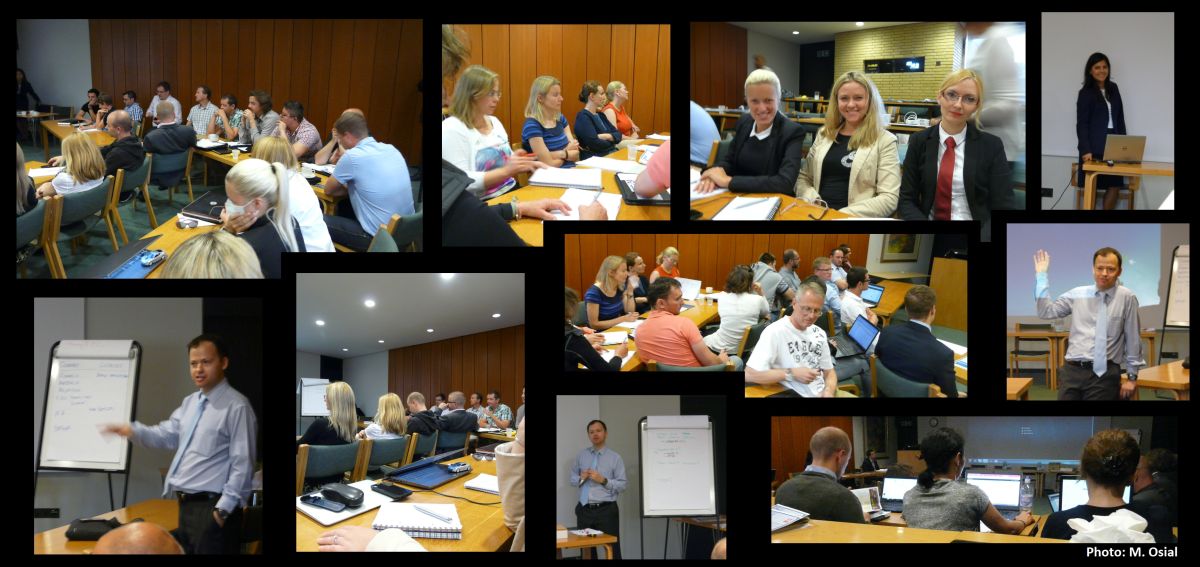
Business meeting does not have to be overwhelming, boring and completed with long reports. On the contrary! Professional conversations can be also carried out under clear blue sky during a garden party. This form of meetings we like especially because it is an ideal opportunity to make new contacts, conversations, exchange views, and experiences. Today's garden party was held in situated in the heart of Oxford Balliol College, which is one of the oldest colleges in the University. We will not bore readers with the course of the meeting, we will add only that the talks were successful. This evening we’ll spend on grinding our i-Teams presentations as for our future speeches some new specialists will arrive. But I’ll try to write few words about this tomorrow...
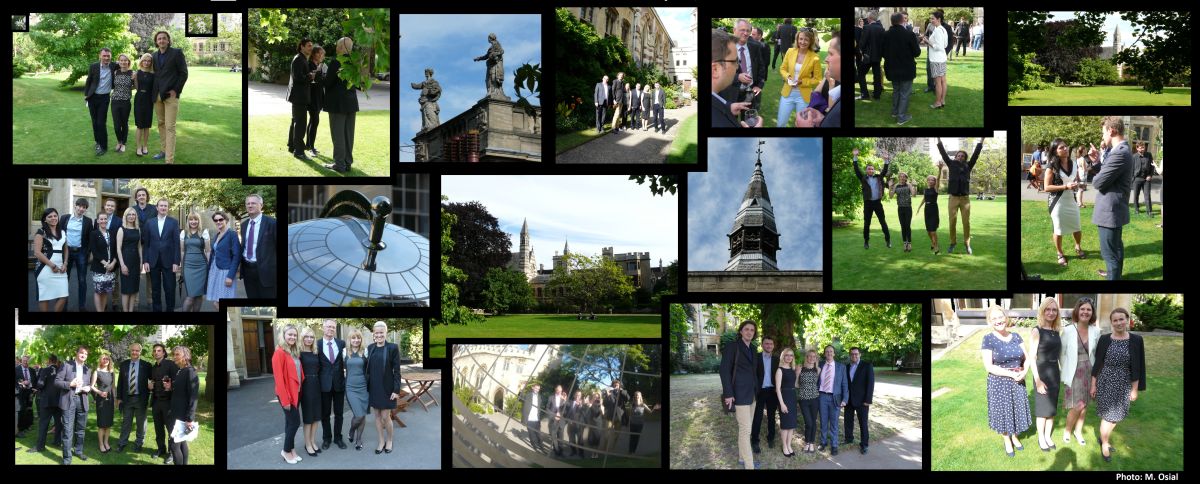
Physicist, chemist, biologist, botanist, medicine doctor, technologist, electronics, computer scientist, geologist, economist... sounds familiar? This is only part of specialists among the participants in the TOP 500 Innovators internship at Cambridge and Oxford. The dynamic development of new technologies enables conducting research projects, of which only three decades ago Sci-Fi movies was filmed. Is botanist may have an impact on the development of research on processing of light energy into electricity, and the medicine doctor on the directions of researches about new plastics? The current state of knowledge and access to advanced equipment in almost every laboratory allows to conduct research in all areas, and the help of specialists from different disciplines is invaluable. Thus the answer is: Yes!
Interdisciplinary research despite its specifics often allow to obtain surprising results, and with diverse specializations of co-workers we can get a fresh look at an old problem and quickly find a solution. A wide range of each team member skills allows for frequent brainstorming sessions and more efficient development of the project. Do you need anything else? Next to the spirit and potential of human resources marketing is also crucial.
In today's class we verified the myth that if you want to be a salesman, you have to be born that way. We have discovered many paths that need we to take to get to know the characteristics of successful marketing. We discussed the profiles of our technologies and sales, the idea of information in the media and the magic power of the web page. We were working also on our own projects, getting to know if the leaflet or advertisement that we prepared lately has insufficient / sufficient / persuasive power of message. In a few hours we will meet with investors, scientists and entrepreneurs invited to the garden party. Not with all of them we will be are able to talk and to convince them to our ideas. The materials that we prepared have to "speak for us" and show the potential of the i-Teams project. Everyone had today the opportunity to play the role of marketing and sales specialist. It would seem that these industries are insignificant in the work of the investigator, but... after intensive workshops and many professional advices, we have found that they are very very very useful.

Often, we wonder where ideas unique disappeared. Companies are trying to bring new and newer products to market. But we could find around us only ubiquitous copies. The new so called “innovative” car is similar to other one moving on the roads. The same is in case of TVs, tablets, computers or mobiles. Then, when we look deeper ... how is the different between A and B application field, and it is still possible to have a unique, brilliant idea?
It is well known true that need is invention mother … and it is impossible to disagree with this sentence. The process of creating new solutions, especially in field of information technology, does not lead to an innovative idea. This need drives the creativity, engagement and allows us to implement interesting ideas in real life. The simplest and most attractive solutions often come unexpectedly. What kind of steps should be taken just after "Eureka!" shout that the implementation is not stretched out as a backup in the morning?
Tim Fernando, who is the Esplorio application developer, was a guest of today's workshop. He has shown us different paths of leading from idea creation to algorithm implementation. With specialists advices it will be much easier for us to take the next steps in technology development in i-Teams projects and in alma maters.

Intellectual property protection world is powered by several rights. According to research discipline the implementation procedures could have a different rate and complexity degrees. Yesterday's workshops have helped us to better understand procedures in case of medical or pharmaceutical technology implementations. Today different issues, examples and tasks are waiting for.
Technology moves fast forward. If solution will be not implemented on the market at the right time, then it will be quickly forgotten. Time plays a crucial role. Moreover, it is a lot of traps and many of them appear in the least expected moment. The questions arise how to legally protect the software, source code and why do we trademarks? How to protect websites and databases, what are the differences between software license agreements and who actually has the right to modify these software?
Today's workshop have shown that in every working field we have to beware of traps. And in IT sector we have not so dangerous traps like in long-term clinical trials. It is not easy to protect software, but after today's workshop with Mireya McKee and Gareth Rogers follow the white rabbit will be much simpler.

It's hard to negotiate without observing the rules, which dominates relations between people representing different institutions and offices. The foundation is to remain calm and etiquette, as well as misunderstandings and conflicts exclusion. Diplomatic protocol is not only the general diplomat regulations. This tool allows us to improve communication skills, relationship between negotiators in everyday life and at work. The diplomatic protocol history reaches the Vienna Congress and fortwo hundred years helps to avoid many traps and mishaps at official meetings.
In the hands of an inexperienced orator even the most interesting historical protocol records and principles could be anesthetic, but our training was conducted perfectly. Marcin Kurek took us through the protocol foundations taking into account genesis and rules. And in practical examples we could check how difficult is to be perfect. But the practice makes perfect!
About protocol one can say a lot, so we finished training for a few minutes before midnight. It is impossible to know all the secrets in this field in one evening, so despite the busy schedule additional meetings, consultations and workshops, diplomatic protocol will visit Oxford again in a few days.

Surprisingly, negotiations are not the fight there are the dialogue leading to obtain an agreement. This definition suggests that negotiations are so kind of art. It lead to achieve obtained issue while leaving our opponent with interviews satisfaction.
Negotiation skills seems to be the most important for entrepreneur, but despite of large number of negotiations schools and textbooks the knowledge secret is hidden in practice. It seem that the negotiations have nothing to do with science, but nothing more customs. This special social skills are necessary at every stage of career development, especial in everyday scientist life i.e. situations with colleagues, students and superiors, and the final result is affected by factors marriage. But one of the most important features is still our approach.
Today's workshops has allowed us to deepen knowledge of compromise art. This day enables to convince themselves that we are good prepared to difficult conversations with entrepreneurs and investors. Supported by Alexandra Bush and Michael Bbogoro we prepared for difficult talks. Then, we conducted signing a license interview under time pressure, which are the projects essence.
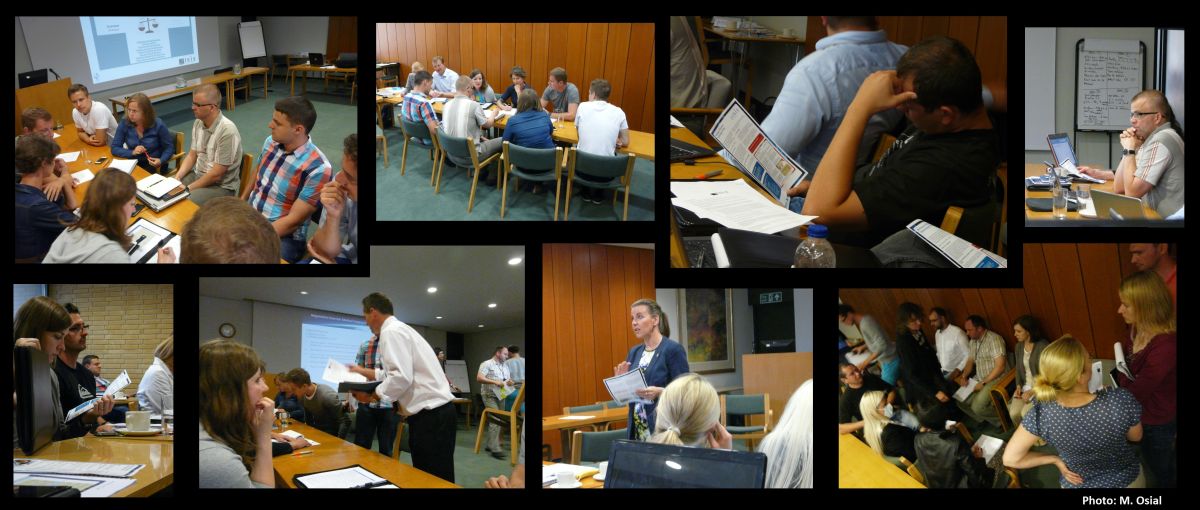
The stereotypical scientist usually engage in basic research with close cooperation only with academic community. He communicate with world through publications and conference presentations. Is it worth to follow this way? Where and how to plan research taking into account its application field? How to develop the project to the product, which could has a long time? How to find good balance between communication with other scientists and outside academia contact?

After an intense simulation game and afternoon workshops, which allows us to answer these questions, we are looking forward continuation. We have begun with the Polish accent, i.e. meeting devoted to the Oxford’s sciences and success formulas. The evening host was Professor Marta Kwiatkowska, a lecturer at the local Department of Informatics. At the meeting we touched both topics discussed at the morning workshops and new inspiration in case of scientific relevance searching or research implementation and commercialization. Moreover, we discussed the differences between British and Polish system in research and innovation postulate fields.
To summarize, two words are coming into mind: inspiration and creativity. We received valuable tips, which help us create cooperation opportunity. With this knowledge transfer of innovative solutions to everyday life will be much easier.

New ventures are often risky. The perfect looking and composed of multiple components plan could be defective. How to go against the tide and don’t give up. How to tame the fear of new and unknown. Learn from mistakes and take benefit from setbacks. how freely manage the risky project and find balance? How to reverse failure in success?
Today Marcelo Bravo, founder of Oxford Pharma Science, answered us on the lot of this kind of questions. The workshop was the confrontation ideas with reality. We get professional expertise, and what’s the most important, another portion of inspiration and motivation to work on many fields.

Not all of what we're working on in the laboratory, we can implement in real life. furthermore the vision we also need the intellectual property protection, investors, ambitious milestones set, business plan, effective management and many other crucial actions and objectives ... The most important is in order to everything worked seamlessly.
Today we worked on examples from Oxford and one could say that it was an operation on a living organism, which ran through a simulation game under the direction of Mireya McKee and Michael Bbogoro. We developed and analyzed many implementation starting from solutions based on biological membranes, DNA sequencing by biological mechanisms to health care. We got to know a lot of mechanisms operating in the world of clinical and diagnostic equipment. We analyzed a lot of details. The assessment commercialization potential of invention, the innovation of the potential impact on society, as well as market risks.
The new, non-obvious but useful are not all adjectives defining innovative solution. Implementation on the medical or pharmaceutical market are preceded by time-consuming clinical trials, that why only the idea is not enough. Without the interest of the client and enter the market at the right time, even the best idea can be quickly forgotten. Today we learned what mistakes not to make. There is no single formula for success, but worth keeping an eye on and carefully observe surrounding projects.

Writing scientific publications is a necessity in the work of any researcher, and the lack of sufficient skills in this field can make it difficult or even prevent the development of a scientific career. Of course, the basis is the practice, but many tricks to facilitate the writing of the text and presentation of data, you can simply learn from others. And this was the aim of the training that Gregory Liśkiewicz led. For the record, let us add that there was no debutants in this training. After all, one of the prerequisites for admission to the TOP 500 Innovators program was authorship or co-authorship of at least three scientific publications. Nonetheless, even an experienced writer can always learn something new, or at least compare his experience with the experiences of others.
We will summarize this training in a simple way: Greg led it perfectly! He said a number of issues relating not only to the writing process, but also a lot of important aspects, like the bibliometric indicators or coordination of multi-author publications. Moreover, as it was already mentioned, the training was attended by experienced researchers, and therefore many people also shared their comments and observations. We can also confidently say that there was not even one person who did not learned in this training something new.
We will not attempt to summarize the material that we discussed today. It was just too extensive and varied. However, we have in mind that the readers of this blog may be scientists who will be happy to find out even part of this knowledge. Let us therefore put here a link to the Gregorys’ training company, where you can download the free textbook about effective scientific publications. We hope that readers will forgive us this small advertisement. And here is the announced link: www

Time flies too fast so we can’t waste it. After dawn we set out to start another amazing journey by car, this time on the south coast. But before we got to the coast we pointed out on the map many interesting destinations. Learning to ride a bike on the left side and familiarity with the traffic direction on the highway was not in vain. It allowed us to quickly master the reflex of seeking the gearshift lever in the handle ;)
With full confidence we dare to say that today is the "stone day". Why? In the first place we visited the world famous megalithic structures, which are dated back to 3100 years BC.
We are talking about Stonehenge, which was a place of worship and it is believed that the sun and moon were worshiped here. There are many hypotheses concerning the destination of this structure. Based on previous discoveries, we can only speculate that this circle is not only a place of worship, but also hides secrets and healing powers. Stonehenge consists of rock structures and the formation of embankments surrounding these stones. It is visited each year by thousands of tourists, but the real invasion takes place during the shortest night of the year, also called the druids night. You can then enjoy the amazing spectacle, with the sun in the lead role. Standing inside the circle, you can see in the sky a luminous path extending over a boulder placed at the entrance to the circle, and then flows into it through a gap between the stones. But Stonehenge is not just the circles. There were also found a well-preserved traces of Mesolithic settlement around there. This place is phenomenal and really worth a visit at different times of day and year. Walking around the circles you get the impression that this place looks differently each time.

More stones making a huge impression on visitors are located in the village of Cerne Abbas in Dorset. This refers to the famous giant. The image of a rock giant was formed by removing grass from the chalk cliffs. It stretches over more than 50 meters, and the blackjack itself held in the hand is 37 meters long. The creation of Cern Abbas Giant dates back to 1694. To this day, this formation remains in the memory of tourists arousing curiosity, and also a lot of controversy.

Stones…this time, we admired the small, medium, large and giant ones on the south coast, west from the junction of islands with the English Channel, in the picturesque village of Worth Matravers. Beginnings of settlements are dated back to the eleventh century when the chapel was founded in Purbeck, and at the moment a population of about 640 residents here. During the Second World War the aviation navigation station set up here. The army with the help of scientists has placed here powerful radars that were both working tool and a symbol of high technology, and have been for a several decades an essential element of the Worth Matravers landscape. Fortunately, today we did not find here this station, but a beautiful coast with rock formations. We were able to admire the monumental cliffs and countless ammonites among the stones emerge from the water.
On the way back, under the cover of night we visited Salisbury. We ate there some local desserts and decorated coffee enjoying every moment spent together in the top 500 traineeship.
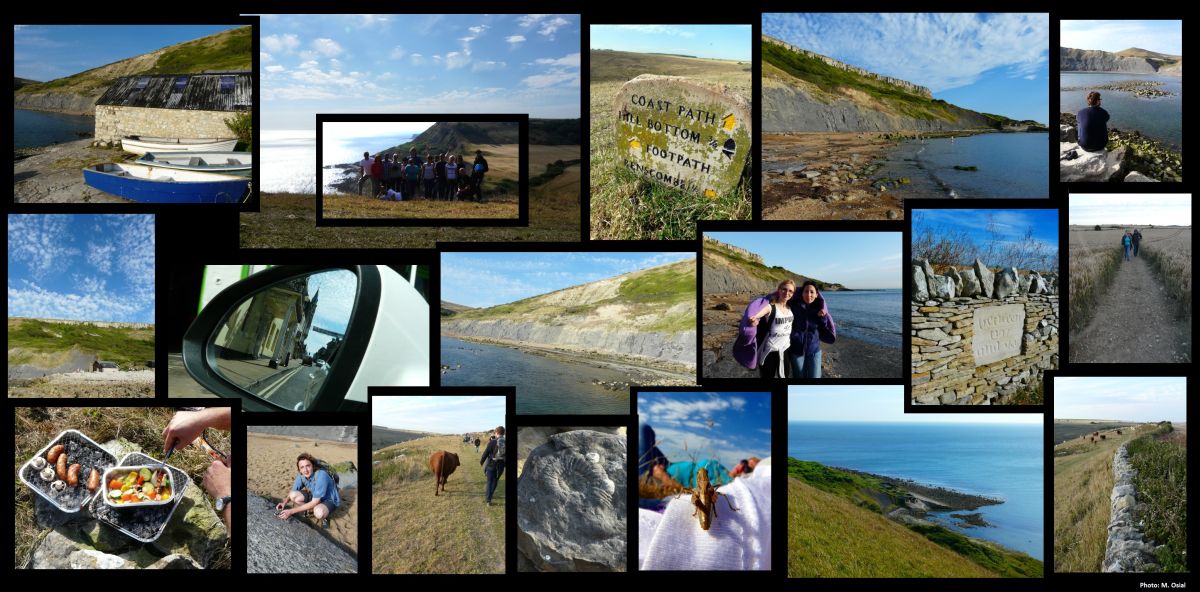
On Friday after breakfast, following the World Heritage trails, we went to a monumental farmhouse with the 300 years palace - the Blenheim. It is located in Oxfordshire near the Woodstock village and University of Oxford.
Blenheim Palace as one of the few facilities in the UK was built in the Baroque style. In this place the Winston Churchill was born and live by many years. Queen Anne gave the palace to John Churchill, the 1st Duke of Marlborough, in the early 18th Century as a reward for victory over French in the War of the Spanish Succession. Legend says that the Palac's design is reproduce the battlefield of Blenheim. The interior is steeped by age exhibits, moreover inside the building are hides a lot of amazing things and pictures. To our surprise at Blenheim Palace we found Polish accents. For example a vase – gift from Stanisław August Poniatowski or lock in the main door of the palace, which was produced in Warsaw.
The palace is located in the centre of the picturesque space of the Italian gardens with beautiful flower beds, many old trees and sculptures. You will also find water gardens and secret garden in French-style with unheard, phenomenal of flora and the lake surrounding this area.
The walls of the palace hide centuries of history and the whole estate with gardens makes it impossible to forget about this place. One day is not enough to satisfy the curiosity and senses, so allow ourselves to say that certainly many of us will come back to this place for a long time. In the Palace and gardens we spent fabulous day.
 .
.